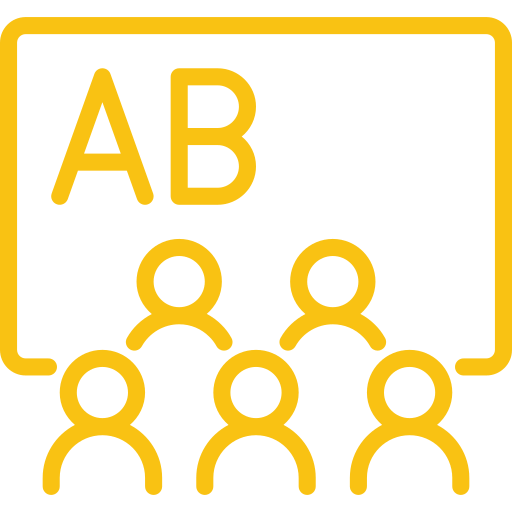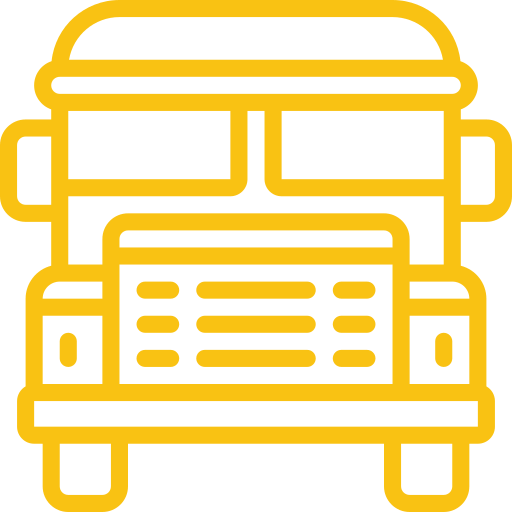Best artificial intelligence tools for teachers to use in their classroom, now there’s a mouthful. No, we’re not discussing any kind of sci-fi flick where automatons supplant the teaching job.
We’re diving into real-life solutions that can make any teacher feel like they’ve got an extra set of hands… or brains!
Imagine grading papers at lightning speed or personalizing learning with just a few clicks. Sounds too good to be true? Well, buckle up because it’s about to get techy in here! (For the record, I have a masters in integrating technology, but then again that was 2007…)
The best artificial intelligence tools for teachers to use in their classroom are transforming education as we know it and making educators’ lives much easier (and way more fun!). So let’s dive right into this brave new world of AI-powered classrooms.
The Need for Artificial Intelligence in Classrooms
AI is no longer limited to being just a part of sci-fi films or tech enthusiasts. It’s making a grand entrance into classrooms, much like the cool kid who struts late into class with sunglasses on.
A study by McKinsey shows that AI can cut down teachers’ prep time from 11 hours to six per week. That’s five extra hours to catch up on Netflix or even master sourdough baking.
Paperwork? Not Anymore.
Tired of drowning in paperwork and administrative tasks? Meet AI, your new go-to for streamlining administrative tasks and providing real-time feedback on student performance. This technological marvel takes care of tedious chores faster than you can say “easy grader easy grader”.
Besides being an admin whiz, AI tools also offer real-time feedback on student performance. Used correctly, AI helps students grasp key ideas, can grade multiple-choice answer sheets automatically, and provide interactive language exercises, while quickly identifying struggling students so teachers can swoop in before it’s too late.
Crafting Unique Learning Experiences with AI
If we think of teaching as cooking, then consider artificial intelligence your sous-chef – chopping veggies while you create Michelin-star-worthy dishes. And by this metaphorical dish, I mean unique learning experiences tailored specifically for each learner.
This isn’t science fiction; it’s happening right now thanks to machine learning algorithms analyzing student data like culinary critics tasting gourmet meals.
Giving Feedback at Light Speed
We live in an era where instant gratification reigns supreme – fast food delivered within minutes; replies expected seconds after texts are sent out; why should educational feedback be any different?
Leveraging AI-based multiple-choice-exam grading tool such as Akindi allows educators not only immediate insights but also offers recommendations tailor-made for every individual learner – kind of like having a personal stylist…for academics.
Also consider how Duolingo utilizes AI chatbots. If a student gets the answer wrong, they can get quick feedback on why it’s wrong and immediate help in understanding the topic or phrase better.
Key Takeaway:
AI isn’t just for tech geeks or sci-fi movies anymore – it’s the cool kid in class, slashing teacher prep time and eliminating paperwork. Like a sous-chef or personal stylist, AI crafts unique learning experiences and provides instant feedback, revolutionizing education as we know it.
Exploring Best Practices for Using AI Tools
For those already experienced in the AI field, it’s time to take your knowledge up a notch and learn about effective practices for utilizing these tools. It’s not just about installing some fancy software and letting it do all the work. There are best practices to consider so that these tools actually enhance learning instead of becoming another tech gimmick.
The first step in your journey is understanding how AI can help address individual needs. With only 49% of teachers’ time spent with students, we need every second to count.
Understanding the Power of Machine Learning
You’ve probably heard people raving about machine learning, but what does it mean exactly? Picture this: A computer program learns from data without being explicitly programmed – kind of like a dog figuring out where you hide its treats. In an educational context, machine learning analyzes student data to track progress and personalize instruction.
No worries though; Skynet isn’t taking over classrooms anytime soon. Instead, McKinsey explains that machine learning supplements educators by providing insights based on performance data. So think less “Terminator” and more “Wall-E”.
In other words, imagine having Sherlock Holmes as your teaching assistant who never sleeps or takes coffee breaks. This ‘assistant’ could provide detailed reports on each student’s strengths and weaknesses – data analysis at warp speed.
Beyond personalizing instruction, though, comes engaging students when integrating AI-powered tools in classrooms – making lessons interactive through platforms like Duolingo or Gradescope caters to diverse learner profiles – visual learners meet hands-on experimenters.
Making Online Assessments Work with Artificial Intelligence:
Say goodbye to long hours grading multiple-choice exams manually using an easy grader tool. Akindi, an AI-based multiple-choice exam grading tool, will be your new best friend, letting you quickly grade multiple-choice assessments.
And AI can even be used now as a way to give feedback on more open-ended assessments. Essays are no longer off the table for assessing work and giving feedback. Debates can be evaluated. The sky’s the limit on this category, whether you like it or not, it’s here.
Key Takeaway:
AI tools in the classroom aren’t just tech gimmicks; they’re game-changers. They can personalize instruction, engage diverse learners, and even make grading a breeze. It’s like having Sherlock Holmes as your teaching assistant – minus the coffee breaks.
Top AI Tools for Teachers
The teaching profession is no stranger to late-night grading sessions and endless lesson planning. Thanks to the power of AI, educators can now reclaim some of their valuable time while simultaneously improving the educational experience for their pupils.
Gradescope – An Efficient Grading Tool
If you’ve ever dreamed of a magical robot that could grade multiple-choice assessments in seconds flat, then Gradescope might just be your new best friend. This open-source AI tool specifically designed for educators has been described as an easy grader by those who have experienced its efficiency first-hand.
No more squinting at answer sheets or arguing with coffee machines about break times – Gradescope handles it all quickly and accurately.
Duolingo – Enhancing Language Learning
Languages are tricky beasts. They require patience, practice…and preferably some form of interaction beyond repeating phrases from textbooks like a parrot on caffeine pills. Enter Duolingo: this classic go-to AI tool ditches traditional language exercises in favor of interactive chatbots that make learning feel less like work and more like playtime.
In addition to vocabulary drills, these clever bots encourage virtual study groups where students create unique characters and engage in immersive conversations – much better than memorizing verb conjugations from a textbook.
Cognii – Improving Writing Skills
Cognii, another gem among AI tools, uses natural language processing technology (that’s fancy talk for ‘understanding human speech’) to evaluate student submissions digitally.
This isn’t merely about pointing out spelling errors; Cognii crafts higher-order thinking questions related to the submission content, helping them grasp key ideas effectively. Open-ended questions encourage more thought than multiple choice, and Cognii allows students to get feedback on these questions much faster than relying on just the teacher.
ChatGPT – Lesson Planning Simplified
The most popular kid on the block, this is an excellent tool that can be used for many things. But it really shines with lesson plans. Simply ask it to come up with a plan by choosing the subject area, educational content to be covered, grade level, and learning outcomes.
You can then ask for more specific needs, like a hook, common misconceptions, discussion topics, and additional support for language learners and extra help.
One of the best free educational tools in recent years, it’s a tool that can take your lessons to the next level with ease. The free version is more than sufficient, and it definitely can help with most of your time-consuming tasks.
The main key to using this excellent tool is making sure you put in the best prompts. To help you get started, here’s a link to an article I wrote previously about new ways to consider using ChatGPT.
Bing – Amazing Images
If you’re looking for a classic go-to AI tool that can help foster your students’ creative side, look no further than the Bing Image Creator. This open-source AI tool, specifically designed for educators, allows users to combine existing images from across the internet and generate unique composite visuals.
This awesome interactive slide-presentation tool is not just about creating stunning graphics; it’s also an excellent resource for boosting writing skills in your classroom. Here’s how:
- Crafting Unique Characters: Encourage your students to use this powerful AI technology to create distinctive characters for their stories. They could mix elements of different people or animals found online into one image, thus helping them visualize their character better.
- Inspiring New Story Ideas: By generating unusual combinations of images, Bing Image Creator can spark fresh story ideas among your students, encouraging them to think outside the box.
Beyond its uses in storytelling and presentations, this Bing Image Creator, with its user-friendly interface, caters perfectly well even if you are teaching language learners at any grade level!
Brainly – Group Studying
Brainly is a powerful tool that is based on a community working together. Students simply help and the whole group comes together to explain the answer. It would be a great option to provide for your students to work together outside of school to study together.
Grammarly – Writing Assistance
Grammarly has really turned into a great writing tool for those in and out of the education sector. Obviously the best part of Grammarly has always been in using proper grammar, but they’ve added many additional features to offer support for all types of writing. It’s not just a great writing tool, it’s a great free plan for your classroom.
Unraveling the Tangle: Overcoming Challenges with Implementing AI in Classrooms
The journey of integrating AI tools into classrooms can feel like navigating a maze blindfolded. A major stumbling block is the lack of professional development opportunities related to AI, which are as rare as hen’s teeth. According to recent surveys, 89% of districts do not currently offer such training.
It’s hard to offer training on a topic that most people still don’t really understand.
*Quick note: we have a course now on AI in education, MTI 580.
Fears About Job Security? Fear Not.
Besides training issues, there’s another elephant in the room – job security concerns. Yes indeed, about half (49%) expressed fears about how these advancements might affect their roles within schools.
But fear not, dear teachers. Remember this mantra – “AI isn’t here to replace but assist”. It aims at reducing administrative tasks so you can focus more on what you love – teaching…and coffee breaks.
Making Tech Accessible: The Real-Life Game Changer
A hurdle bigger than trying to find Waldo when implementing AI in classrooms is ensuring equal access for all students regardless of socioeconomic status or geographical location.
Schools may need additional funding or partnerships with tech companies who believe education should be equitable through technology distribution programs like Google’s Rolling Study Halls initiative, equipping school buses with Wi-Fi devices and computers for rural students during long commutes home after school hours. Talk about taking ‘mobile learning’ literally.
Data Privacy Concerns: Navigating Through Uncharted Waters
Last but certainly not least are data privacy concerns associated with using any digital tool, including those powered by artificial intelligence. Schools must adhere strictly to regulations protecting student information while also educating parents about these safeguards and obtaining informed consent where required.
By addressing these challenges head-on, we make strides towards successfully integrating powerful learning tools like artificial intelligence into our classrooms.
Key Takeaway:
Implementing AI in classrooms can feel like a blindfolded maze run, with challenges ranging from lack of professional development and job security fears to tech accessibility and data privacy concerns. But remember, the goal is not replacement but assistance – making teaching easier while ensuring equitable education for all. So let’s tackle this labyrinth head-on.
Future Prospects of Artificial Intelligence in Education
If you’re expecting the prospect of schooling to resemble something out of a sci-fi flick, then hang on tight. We are on an exciting ride towards classrooms powered by artificial intelligence. AI promises to bring about changes as refreshing as a teacher’s lounge stocked with free coffee and donuts.
Imagine grading tools so advanced they could make marking multiple-choice assessments feel like sipping margaritas on a beach. Yes, we’re talking machine learning algorithms working their magic here. For instance, Akindi, our friendly neighborhood AI-based multiple-choice exam grading tool can grade faster than your school’s champion sprinter.
The Rise of Virtual Classroom Assistants
Moving beyond the realm of automated grading systems – behold virtual assistants. These digital wizards take multitasking to another level – scheduling assignments one minute and answering student queries the next. Talk about making classroom presentation prep smoother than freshly laminated handouts.
The Class AI Assistant is developed for online and hybrid classes, and is powered by ChatGPT. You can share study materials online with your students, and a great deal more.
A New Era: Evaluating Virtual Debate Projects
You thought AI was just good for administrative tasks? Well, think again my friend because now we’ve got them evaluating complex projects such as debates or presentations too. Through sophisticated speech recognition technology coupled with natural language processing capabilities, AI has become quite adept at judging how well students argue over whether cats or dogs make better pets. Who would’ve thought?
Let’s call him our eloquent evaluator. It uses these technologies enabling it to give detailed feedback about pronunciation accuracy, speech rate, among other parameters. This goes way past traditional methods which rely solely on human judgment, hence offering much more objective evaluation.
There’s even a tool called ConvoWizard that lets people know when they are escalating a debate, or not providing feedback that is constructive. It was just recently used in a study, but the concept is quickly catching on. Take for example Project Debater, which is an AI tool that can interact and debate with humans.
An even simpler version, although one without grading tools, is character.ai. This tool can debate students as famous historical members, along with many other applications.
Key Takeaway:
AI is transforming education, making tasks like grading exams as relaxing as a beach vacation and handling administrative duties smoother than laminated handouts. It’s even judging debates with the precision of an eloquent evaluator, ushering in a new era of objective evaluation.
The Role of Teachers in an AI-Powered Classroom
Picture this: Classrooms buzzing with artificial intelligence (AI) tools, students zipping through lessons on their digital devices. But wait. Where’s the teacher? Are they out of a job?
Nope. Quite the opposite, actually. In fact, teachers are like superheroes navigating these high-tech classrooms; guiding students to use AI-powered tools effectively and efficiently.
A Whole New Level – Emotional Intelligence
You see, while machines can crunch numbers faster than we could ever dream of doing ourselves, there’s one thing that they lack: emotional intelligence. That’s where our superhero teachers swoop in.
Teachers have this superpower called empathy, they understand when you’re struggling with algebra or if Shakespearean English is making your head spin. They’re there for those fist-pumping ‘aha’ moments too and no machine can replicate that feeling.
Moderating Use Of Technology
In a world brimming over with tech gadgets and gizmos it’s easy to get carried away…kinda like being let loose in a candy store. Here again enters our caped crusader, you the teacher, to ensure balance between screen time and other crucial aspects such as physical activity and social interactions.
Research from Common Sense Media shows excessive screen time leads to health issues among young folks which just goes on proving why having real-life heroes (read: teachers) around is so important even amidst all the fancy schmancy technology.
Making Online Assessments Work with Artificial Intelligence
Ever wished for a magic wand that could grade your students’ multiple-choice tests in the blink of an eye? Well, welcome to Hogwarts. Just kidding. But seriously, artificial intelligence (AI) is pretty much like having magical powers when it comes to grading online assessments.
Futuristic Teaching With Current Technology
Surely such advanced tech must belong somewhere in 2050, right? Nope. This isn’t sci-fi; these innovations exist today.
In fact, what we’ve explored barely scratches the surface when considering how machine learning technologies can revolutionize education assessment practices.
The learning process for students is changing, with student learning being impacted in real time by a variety of technologies. Although these are only a few of the best AI tools, the idea is to start educating ourselves as teachers. Every day there are new capabilities, and some of them are being invented by the students in our own classrooms.
Conclusion
Artificial intelligence is transforming classrooms, one tool at a time.
The best artificial intelligence tools for teachers are reshaping the education landscape and making teaching more efficient and effective.
From streamlining grading with Gradescope to personalizing language learning with Duolingo, AI has much to offer in enhancing student engagement and individualized instruction.
Cognii takes it further by helping students improve their writing skills through natural language processing technology.
Navigating challenges like lack of professional development opportunities or job security fears may seem daunting but remember that solutions exist.
As we look towards the future prospects of AI in education, we see potential advancements such as sophisticated grading tools or virtual assistants that could make classroom management even smoother.
In an increasingly digital educational landscape powered by AI, teachers’ roles continue to evolve – they remain irreplaceable guides amidst technological progress.
One More Thing…
If you are looking to learn more, consider taking one of our graduate classes here at MTI. We offer the most affordable graduate classes on the market, developed by real teachers.
Unlike other companies, we have zero hidden costs, and we provide the syllabus before you sign up. Some surprises are good, but they shouldn’t involve your money or time.
And if you’re interested in teaching with us, feel free to reach out via any of our social media links, or send an email to [email protected] for more details.





















